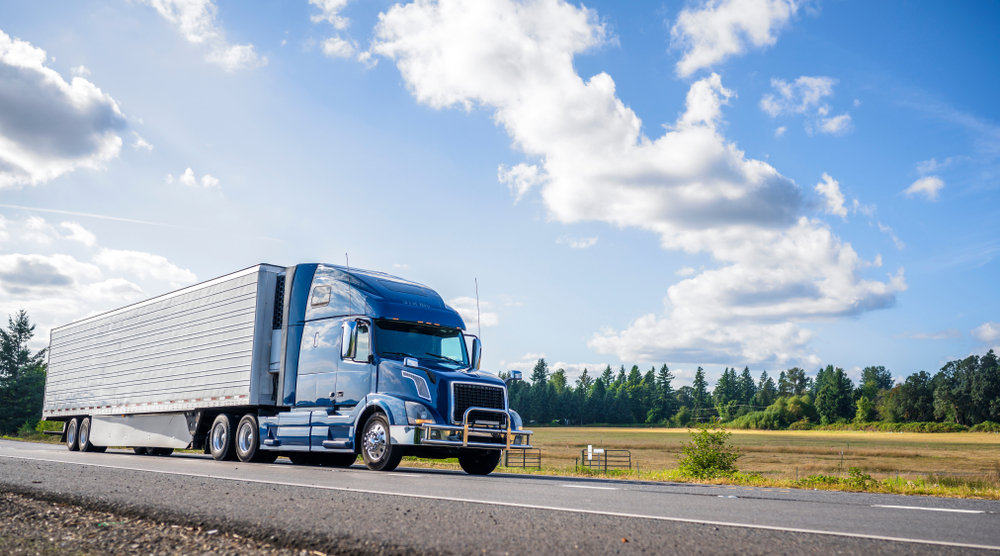There’s an old saying that reminds us “time is money” – whoever coined that phrase was likely talking about an owner-operator in the logistics industry whether they realized it or not.
When taking on work, it’s important to acknowledge that not all jobs are created equally. If you have two tasks ahead of you with both requiring you to drive 100 miles, one could still be profitable while the other is woefully inadequate. This is because different factors determine your owner-operator cost per mile.
Understanding what those factors are – and how to calculate that cost before you take the job – is the key to making the most profitable decisions possible when it comes to your career.
How Much Do Owner Operator Truck Drivers Make?
Owner-operator truck drivers can earn between $150,000 and $300,000 annually, depending on factors such as freight type, distance traveled, and operational efficiency. Actual earnings vary widely based on market conditions and individual business strategies, but the role offers significant income potential for those who manage their operations effectively.
Why You Should Calculate Your Cost Per Mile
One of the biggest reasons why you should always calculate your owner-operator cost per mile is because it helps you remain profitable. If you know how much you’re spending to drive one mile on an average job, you know whether your rates will actually be able to cover your expenses. Not only do you know how much of a profit you’re making, but you also have actionable information that you can use to increase those profits as much as possible.
Having said that, knowing your owner-operator cost per mile also helps to keep you competitive. You can strike that delicate balance between making as much profit as you can and making sure that your rates aren’t set so high that you have a hard time getting attention.
Beyond that, knowing your owner-operator cost per mile is all about the foresight it gives you. If you know how much you’re spending per mile, you can focus on things like route optimization, for example. You can also concern yourself with better budgeting and planning, all of which will help make sure that you’re operating as efficiently and as cost-effectively as possible. This is in comparison to owner-operators who don’t know their cost per mile, who probably end up spending a lot more than they realize on an average job.
Factors That Determine Cost Per Mile
Many new owner operators in particular make the mistake of assuming “cost per mile” and “cost for gas” are the same thing. In reality, that is just one small part of a much larger story. Other critical factors that you must track include the following.
Travel Distance
Obviously, one of the main things you’ll want to look at to determine your cost per mile is the travel distance. Believe it or not, short-haul trips usually result in a higher cost per mile because a lot of the fixed costs you’re dealing with, like insurance, are distributed over fewer miles.
Weight & Dimensions of Shipment
Heavier loads will typically be associated with a higher cost per mile because they require more fuel, more of your time, and sometimes even specialized equipment that ends up being more expensive.
Freight Classification
Freight that is of a higher freight classification tends to be bulkier, more fragile, or just more difficult to handle. This will increase the amount of time it takes to move them properly, which will ultimately raise your cost per mile as well.
How to Calculate Your Cost Per Mile
Once you know which fixed and variable factors impact cost per mile, you can begin to calculate your own. You should do this before accepting or even bidding on a job so that you know exactly how much you can expect to make from it if all goes to plan.
Determine Expected Mileage
First, look at the route you’ve laid out for yourself and determine how many miles you expect to drive. Thankfully, this is something that can be done right online these days.
Calculate Your Fixed Expenses
Next, look at all the fixed expenses that you have that will not actually change depending on the length of the trip. These still impact your cost per mile because they still need to be accounted for. This includes but is not limited to things like any truck payments or leasing costs that are still outstanding, the amount you’re paying for insurance, and even depreciation.
Determine Your Variable Costs
Next, you can take a look at all your variable costs. These will always fluctuate based on the amount of miles you’re traveling, which is why you need to re-run these numbers with every trip.
Factors that would fall into this category include fuel because you can’t control (nor can you predict it). Any maintenance or repairs that are needed for the upcoming trip in particular would also qualify. As would tolls, fees, and any driver costs (like wages for someone other than yourself) that need to be accounted for.
Include Salary Expenses
Speaking of wages, always include your own salary (or the salary of someone else) in your calculation.
Calculate Cost Per Mile
Finally, you can get down to actually calculating the cost per mile. To do this, take the total fixed costs you have and add to them the total variable costs. Take the number you arrive at and divide it by the total number of miles you’ll be driving for this trip. At that point, you have your cost per mile, and you can set bids (and make other financial-related decisions) accordingly.
Start Optimizing Your Earnings Today!
Once you learn how to calculate your cost per mile (and use that information to your advantage), you can begin to explore other techniques that optimize your earnings – like freight factoring.
Also commonly referred to as invoice factoring, freight factoring is a type of financial service that allows you to sell your invoice to a third party to get paid immediately – all to free up cash flow so that you can devote the majority of your attention to the task ahead.
Just because you know how much your cost per mile is doesn’t mean a client will necessarily pay you on time. With freight factoring, you can take care of those outstanding invoices and spend less time collecting so that you can spend more time driving – which in and of itself is the most important benefit of all.
If you’d like to find out more information about how you can easily calculate your cost per mile as an owner-operator, or if you have any additional questions that you’d like to go over with someone in a bit more detail, please don’t hesitate to contact the team at Advanced Commercial Capital today.


 As the name implies,
As the name implies, 